On the 170th birth anniversary of Alexander Graham Bell, the man credited for the invention of the first practical telephone, we look at his greatest creation, later work and other useful mechanical innovations that went on to shape modern life as we know today...
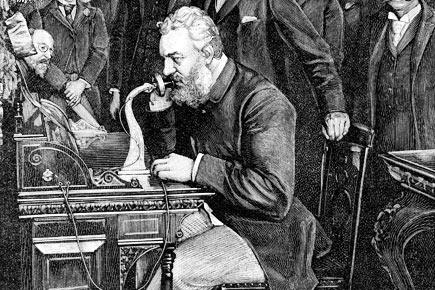
Alexander Graham Bell
Scottish-born Canadian inventor Alexander Graham Bell's life work especially his research on hearing and speech and experiments with hearing devices was inspired due to the fact the both his mother and his wife were deaf. This research culminated in his being awarded the first US patent for the innovation of the telephone in 1876.
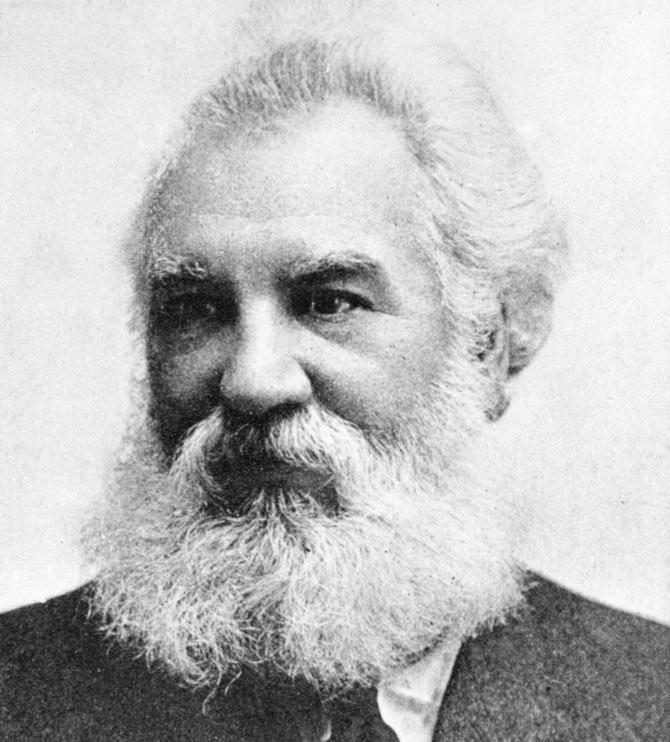
Alexander Graham Bell
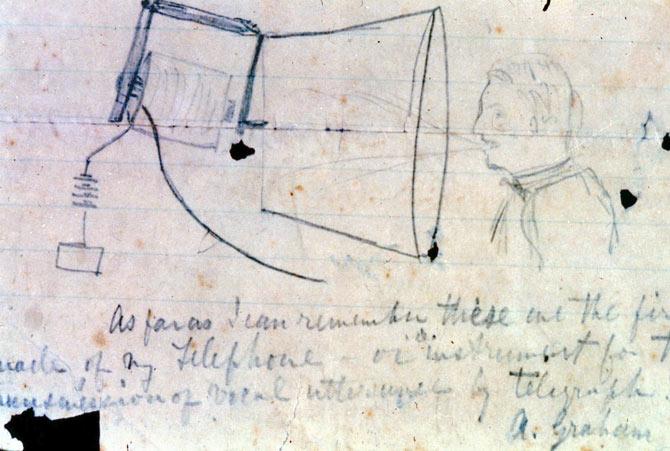
An early sketch of the mechanics of Alexander Graham Bell's telephone
Although many have been credited as telephone pioneers, Alexander Graham Bell was the first to be awarded a patent for it in March 1876. Shortly after Bell's invention of the telephone in the same year, Hungarian engineer Tivadar Puskás invented the telephone switch, which allowed for the formation of telephone exchanges, and eventually networks. The word telephone is derived from the Greek words tele, meaning far and phone, which meant voice.
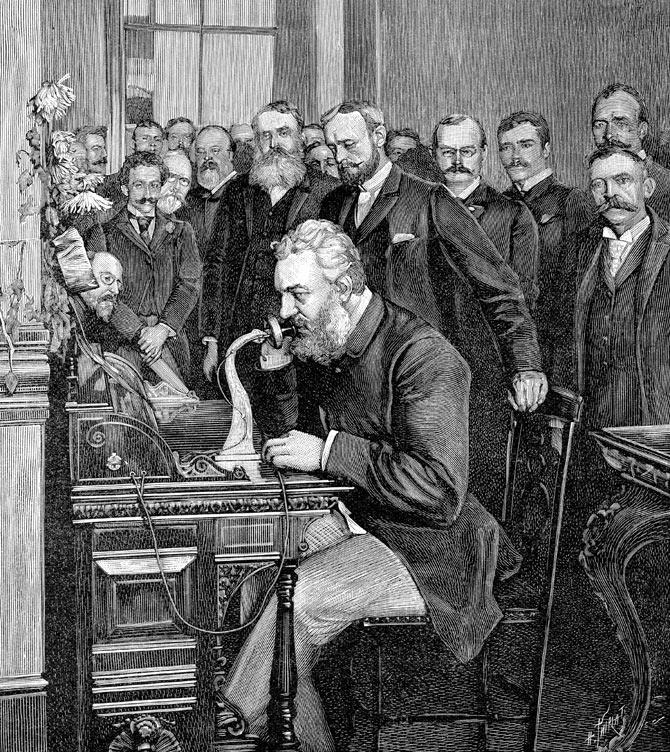
An illustration of Alexander Graham Bell at the opening of the long-distance line from New York to Chicago in 1892
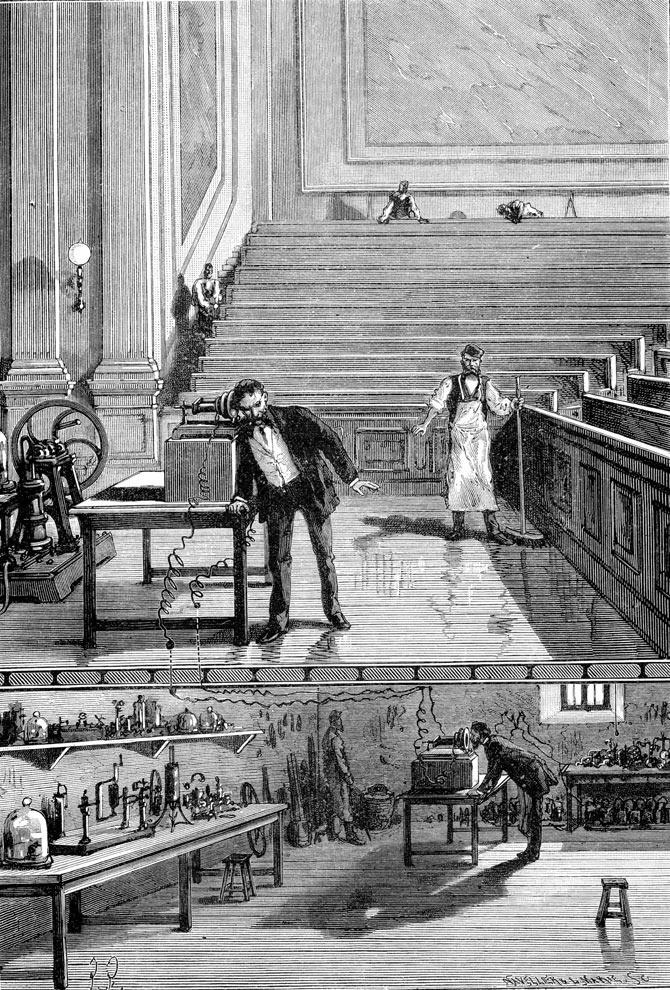
An illustration of one of Alexander Graham Bell's experiments during the invention of the telephone
The invention enabled communication to develop in a major way and telephones rapidly became indispensable to businesses, government, and households, and are today some of the most widely used small appliances.
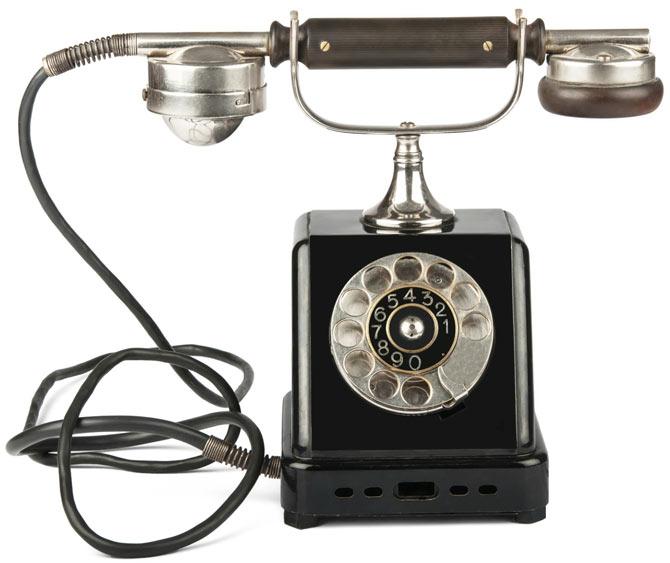
A representational model of a vintage telephone
Although originally designed for simple voice communications, most modern telephones have many additional capabilities, which include the ability to record spoken messages, send and receive text messages, take and display photographs or video, play music, and surf the Internet thus leading to the creation and spread of smartphones, phones that integrate all mobile communication and computing needs.
Did you know?
>> Alexander Graham Bell considered his most famous invention, the telephone, an intrusion on his real work as a scientist and refused to have a telephone in his study.
>> Bell laid the foundation for wireless telephone communication with the invention of the Photophone, which he co-invented with his assistant Charles Sumner Tainter. It allowed the transmission of both sounds and normal human conversations on a beam of light.
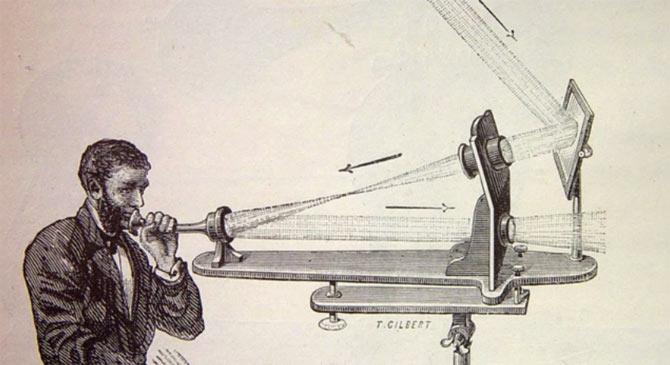
Illustrations (above and below) depicting Alexander Graham Bell's photophone. Pic courtesy/ YouTube
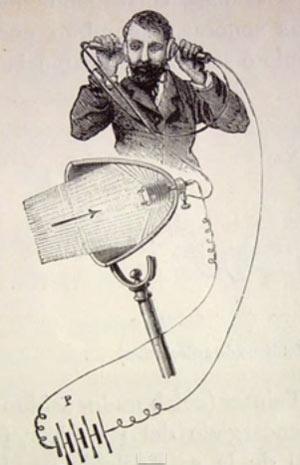
On June 21, 1880, Bell's assistant transmitted a wireless voice telephone message a considerable distance, from the roof of the Franklin School in Washington, D.C., to Bell at the window of his laboratory, some 213 metres (700 ft) away, 19 years before the first voice radio transmissions. Bell considered the photophone to be his 'greatest invention'.
The photophone was a precursor to the fiber-optic communication systems which achieved popular worldwide usage in the 1980s. Wireless telephone communications have evolved since with the advent of the cordless telephone followed by cellular phones, which further evolved into the smartphones that we know and use today.
>> Alexander Graham Bell is also credited with the invention of the metal detector, which he quickly put together in an attempt to find an assassin's bullet in the body of then US President James Garfield.

A metal detector. Picture of representational purposes
>> Bell and his associates stumbled upon the basic principle which would one day find its application in the tape recorder, the hard disc and floppy disc drive and other magnetic media, when they considered impressing a magnetic field on a record as a means of reproducing sound. They abandoned their research after failing to develop a workable prototype.
>> Bell's own home used a primitive form of air conditioning, in which fans blew currents of air across great blocks of ice.
Other notable mechanical innovations that shaped modern life
Gramme machine: Zenobe Gramme's Gramme machine is an electrical generator that produces direct current and was built as either a dynamo or a magneto. Its name was derived from its inventor Gramme and was inspired by a machine invented by Italian physicist Antonio Pacinotti in 1860.
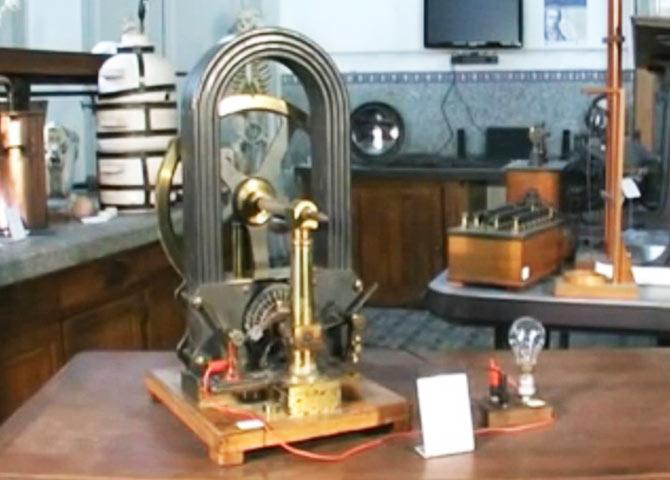
A representational model of the Gramme machine. Pic/YouTube
Pancinotti's Pacinotti-Gramme ring armature, which was created after he improved upon the direct-current electrical generator, or dynamo, which was described in a paper published in 1865. The machine used a ring armature around which was wrapped a coil of wire, to produce a smoother current than that available from previous types of dynamo. Based on this invention, Gramme developed a new induced rotor in form of a wire-wrapped ring, which later became known as the Gramme ring.
The Gramme ring used a ring armature, with a series of armature coils, wound around a revolving ring of soft iron. The coils are connected in series, and the junction between each pair is connected to a commutator on which two brushes run. Permanent magnets magnetize the soft iron ring, producing a magnetic field which rotates around through the coils in order as the armature turns. This induces a voltage in two of the coils on opposite sides of the armature, which is picked off by the brushes.
Earlier electromagnetic machines passed a magnet near the poles of one or two electromagnets, or rotated coils wound on double-T armatures within a static magnetic field, creating brief spikes or pulses of DC resulting in a transient output of low average power, rather than a constant output of high average power.
With more than a few coils on the Gramme ring armature, the resulting voltage waveform is practically constant, thus producing a near direct current supply. This type of machine needs only electromagnets producing the magnetic field to become a modern generator.
The Gramme machine led to the accidental invention of the modern electric motor during an industrial expo in 1873, when Gramme accidentally discovered that the device, Gramme accidentally discovered that this device. This discovery occured when Hipolyte Fontaine, Zenobe Gramme's partner connected the terminals of a Gramme machine to another dynamo which was producing electricity, and its shaft began to spin.
Zenobe Gramme's Gramme machine was the first powerful electric motor and is the basis of nearly all DC electric motors even to this day. His use of multiple commutator contacts with multiple overlapped coils, and his innovation of using a ring armature, was an improvement on earlier dynamos and helped usher in development of large-scale electrical devices.
The steam engine: The credit for invention of the steam engine goes to many people including, Spanish innovator Jerónimo de Ayanz y Beaumont, who patented the first ever steam engine in 1606, Thomas Savery who patented a steam pump that used steam in direct contact with the water being pumped in 1698 among others. Savery's steam pump used condensing steam to create a vacuum and draw water into a chamber, and then applied pressurized steam to further pump the water. The atmospheric engine invented by Thomas Newcomen's in 1712 was the first commercial true steam engine using a piston, and was used for pumping in a mine.

A train powered by the steam engine. Picture for representational purposes
The most significant version of the steam engine was patented by Scottish inventor James Watt in 1781. Realising that the contemporary engine designs wasted a great deal of energy by repeatedly cooling and re-heating the cylinder, Watt introduced a design enhancement, the separate condenser, which avoided this waste of energy and radically improved the power, efficiency, and cost-effectiveness of steam engines. Eventually he adapted it to produce rotary motion, greatly broadening its use beyond pumping water.
Steam engines could also be applied to vehicles such as traction engines and the railway locomotives. The stationary steam engine was a key component of the Industrial Revolution, allowing factories to locate where water power was unavailable.
The light bulb: Thomas Edison invented the first commercially practical incandescent light or light bulb. After many experiments, first with carbon filaments and then with platinum and other metals, in the end Thomas Edison returned to a carbon filament. The first successful test was on October 22, 1879; it lasted 13.5 hours. Edison continued to improve this design and by November 4, 1879, filed for U.S. patent 223,898 (granted on January 27, 1880) for an electric lamp using "a carbon filament or strip coiled and connected to platina contact wires".

A light bulb. Picture for representational purposes
Incandescent bulbs are manufactured in a wide range of sizes, light output, and voltage ratings, from 1.5 volts to about 300 volts. They require no external regulating equipment, have low manufacturing costs, and work equally well on either alternating current or direct current. They are widely used in household and commercial lighting, for portable lighting such as table lamps, car headlamps, and flashlights, and for decorative and advertising lighting.
Incandescent bulbs are gradually being replaced in many applications by other types of electric light, such as fluorescent lamps, compact fluorescent lamps (CFL), cold cathode fluorescent lamps (CCFL), high-intensity discharge lamps, and light-emitting diode lamps (LED).
 Subscribe today by clicking the link and stay updated with the latest news!" Click here!
Subscribe today by clicking the link and stay updated with the latest news!" Click here!









